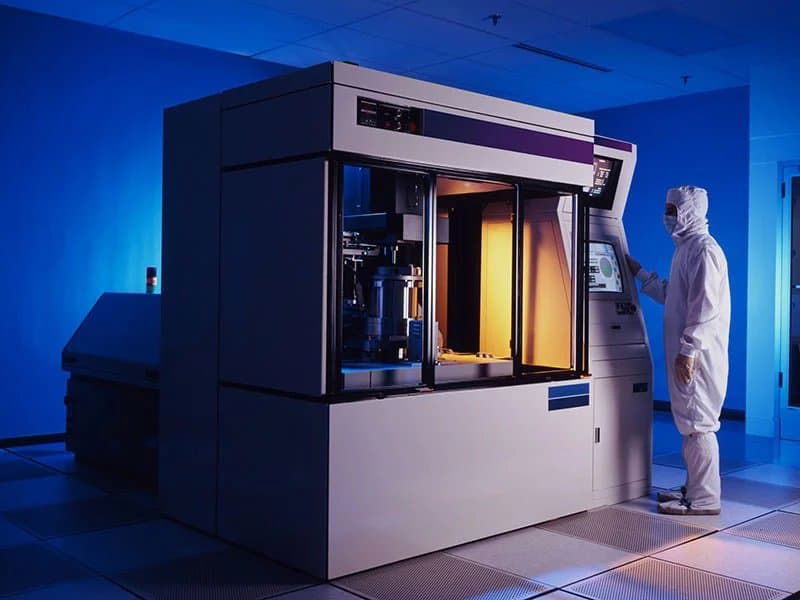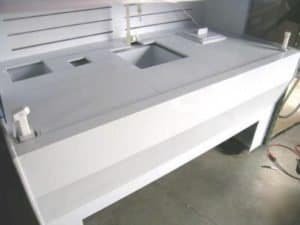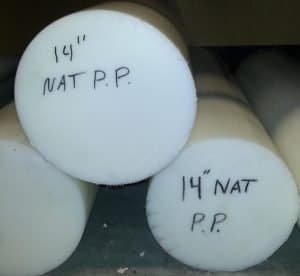
FM 4910
Specialty FM 4910 Materials
High flame retardant, chemical resistant, and impact resistant specialty plastics that meet the requirements of the FM 4910 specification.
A specialty line of plastic materials was created for the most flame retardant and fire-safe applications. These plastic materials fall under the FM 4910 specification and meet the UL 94 V-0 specifications as well. These materials have been used in high-risk applications like aircraft, spacecraft, and semi-conductor manufacturing and help avoid dangerous situations. CRP-1, LAM 2000, and other materials meet the stringent requirements for the FM 4910 specification.
We are proud to supply the full line of FM 4910 materials from SIMONA America. SIMONA America is an expert in providing a full product portfolio of materials meeting this stringent specification.
SIMONA® CRP-1, SIMONA® 2000, PVDF, PFA-M, E-CTFE, and FRP-3 are made by SIMONA America Industries and excel in these highly technical environments and applications. Some of these materials may also be available in ESD (Electro Static Discharge). If you are interested in these specialty materials, please call us at (866) 832-9315 and ask for Matt or Jeff for more information on these products.
What does FM 4910 mean?
CRP-1 The FM 4910 specification was created in response to requirements regarding the quantity of toxic smoke that can be emitted from some materials when exposed to high heat or flame. FM stands for Factory Mutual, the company that originally experienced a tragedy due to burned materials releasing toxic smoke. This led to the creation of the specification, and the materials that meet the stringent requirements are used in applications such as aircraft, semi-conductor, and highly chemical environments.
CRP-1 These materials are created to limit fire propagation, the spread of flame on the material, and smoke generation or the quantity of smoke generated by igniting the material. FM 4910 meets UL 94 V-0 flame test criteria and can withstand temperatures from 140 to 425°F. These materials also perform well in wet process applications and resist acids, bases, solvents, and oxidizers. Common applications include; tanks, vessels, and machine parts, and clean rooms, cabinets, enclosures, and view windows.
CRP-1
CRP-1 CRP-1 is a specialty PVC material. This material has exceptional impact strength and ductility as an FM 4910 listed material.
CRP-1 CRP-1 has demonstrated better chemical resistance, superior surface appearance, higher gloss and surface smoothness. It has better resistance to particle adhesion than other materials and its resistance to stains makes it easier to clean. Welding rods are available for welding joints together easily and efficiently. It is one of the FM 4910 materials that is easier and faster to weld than competitive materials. Although it has a lower density and weight than similar materials, it still maintains stiffness and a higher flexural modulus.
Common applications include semiconductor process equipment, chemical and fluid handling, cabinets with acid and alkaline exposure, electrical cabinets, fire safe componentry, and dry tool areas. This is the most common material we see used for clean room and other similar applications. SIMONA® CRP-1 upholds all the properties above and continuously performs very well.
LAM 2000

PVDF
pvdf1PVDF (Polyvinylidene Fluoride) is a fluoropolymer material that falls into this specialty material category. SIMONA manufactures two types of PVDF materials; SIMONA® PVDF homopolymer sheet made with Kynar® 740 and SIMONA® PVDF-C copolymer sheet made with Kynar Flex® 285.
PVDF PVDF products provide solutions for highly demanding applications in the chemical processing industry that effectively counteract damage due to corrosion, extend the life of service equipment, and improve operational safety. Common applications include semiconductor equipment, chemical process/storage, fluid handling, fire-safe componentry, and DI water systems.
The advantages for FM4910 applications include flame resistance, high purity, ease of machining, excellent weatherability, and UL 94 V-0 specification.
FRP-3
FRP-3 FRP-3 is a Fiberglass Reinforced Polypropylene. It meats the stringent Factory Mutual Cleanroom 4910 Fire test (FM 4910) and is used typically for walls and cabinets in clean rooms. It is also used for rinse modules, water transfer interfaces, alkaline and UPW modules, and dry tool areas. FRP-3 is an economical material that is very weldable and formable. Like the other FM 4910 materials, it is stiff, impact resistant, and has good mechanical and thermal properties. 
CPVC – Boltaron®
CPVC CPVC (Chlorine Polyvinylchloride) is made by a SIMONA® owned division Boltaron®. CPVC is a heat and corrosion resistant sheet. Because of its excellent corrosion resistance at elevated temperatures, it is ideally suited for self-supporting constructions where high temperatures are a concern. The chlorination provides the extra heat resistance in the material.
CPVC Common applications include Wet Process Equipment, Chemical Delivery Systems, Cleanroom Cabinetry, Furniture, & Accessories, Quartz Cleaners, and Chemical Drum Cabinets. The primary usage is in Cleanroom environments. Advantages of this material are RoHS and REACH compliance, easy fabrication and formability, and flame retardant properties. It is FM 4910 Listed (1/4”-1” only) and meets UL 94 5VA Testing Criteria.



